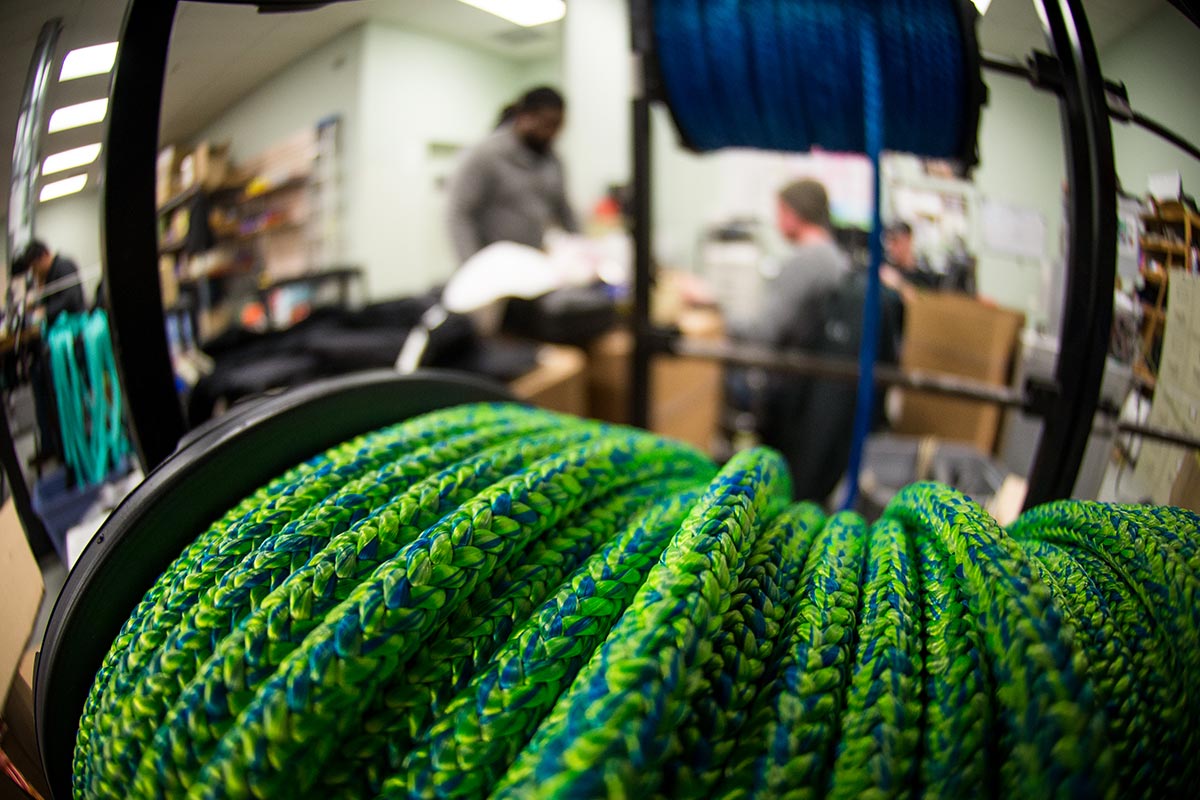If you climb trees for a living then you’d know that your rope is quite literally your life-line, so selecting the right rope is vital to your safety. We speak with Adrian Greed, Senior Parts Interpreter at Vermeer, to find out which climbing ropes are the top picks for arborists. Adrian has been helping arborists find the right ropes, devices, and gear for over 17 years, from Vermeer’s Melbourne dealership in Derrimut.
Selecting the right rope
Mr Greed identifies a few keys points for selecting a climbing rope. “When picking a rope, you need to know which one will provide the best results for your intended use.
“For climbing rope, you’ll generally want one that is less stretchy or elastic. Elastic ropes put more strain on the climber and they’ll have to exert more energy when getting from point A to B.”
“At Vermeer, we stock a variety of double braided and Kernmantle climbing ropes, which both offer a range of elasticity and strengths.”
Vermeer’s most popular Kernmantle climbing ropes include the Xstatic rope by Teufelberger and the Kernmaster Safari Climbing Rope by Yale Cordage. The Xstatic rope maintains high tensile strength with minimum elongation, while the Kernmaster Safari Climbing Rope is relatively static under low loads, but the core will begin to ravel and absorb energy under loads more than 317.5 kg before returning back to the static state.
Their most popular double braid climbing ropes include the Poison Hi-vy by Yale Cordage and the Banshee climbing rope by Notch. The Poison Hi-vy is versatile for all climbing styles, affordable and ideal for climbers looking for limited “bounce”, and the Banshee is a new 24-strand climbing line for tree care professionals looking for a rope that combines light weight with a resilient roundness.
“Selecting the right rope will also depend on which mechanical ascending devices you want to use it with.” Mr Greed said.
“Ropes will generally range from 10-13mm diameter, so be sure to check your devises to see what size rope it is compatible with. The thicker the rope, the easier it is to grip but also the heavier it becomes.”
Whether you are using a double rope technique (DRT) / Moving rope system (MRS) or single rope technique (SRT) / Stationery rope system (SRS), you’ll need a rope that can hold its knots. “The softer and more flexible a rope, the easier it will hold knots. Soft ropes will also create less friction therefore be less likely to cause the rope to melt or fuse.” Mr Greed explains.
“Lastly, the colour of the rope can also assist in this decision. Most professional climbers will opt for a bright coloured rope so they are easily spotted by their ground crew. So they can look out for the rope when using a chainsaw.” Mr Greed said.
“If you are in the market for a new rope and want to check out the range of climbing ropes available from Vermeer, drop by and give it a go at one of our rope testing facilities.”
Knowing when it’s time to hang it up
“Like most of our customers, you’re probably going to be climbing and using this rope very regularly. Knowing when to cut up and throw away a rope is vital to your safety.” Mr Greed says.
A rope’s ability to function depends on how you use it, how well you care for it and how you store it.
A Minimum Industry Standard for rope use in arboriculture (MIS302) has been released as part of a book series by Arboriculture Australia Ltd in consultation with the national arboriculture community. MIS302 contains an in-depth descriptions of rope selection, rope qualities and rope use. The book explains that when inspecting your rope before and after use, a few things to note are:
- Is there any heat damage, such as glazed areas?
- … Click here to read the full article in the April/May edition of The Australian Arbor Age
For more information on Arboriculture Australia Ltd’s Minimum Industry Standards, the first four books are available now from Vermeer in Brisbane, Sydney, Melbourne and Adelaide for purchase and don’t hesitate to contact your local Vermeer Parts Counter if you’d like advice on rope or any of the latest arbor gear.

 MyDealer:
MyDealer:


